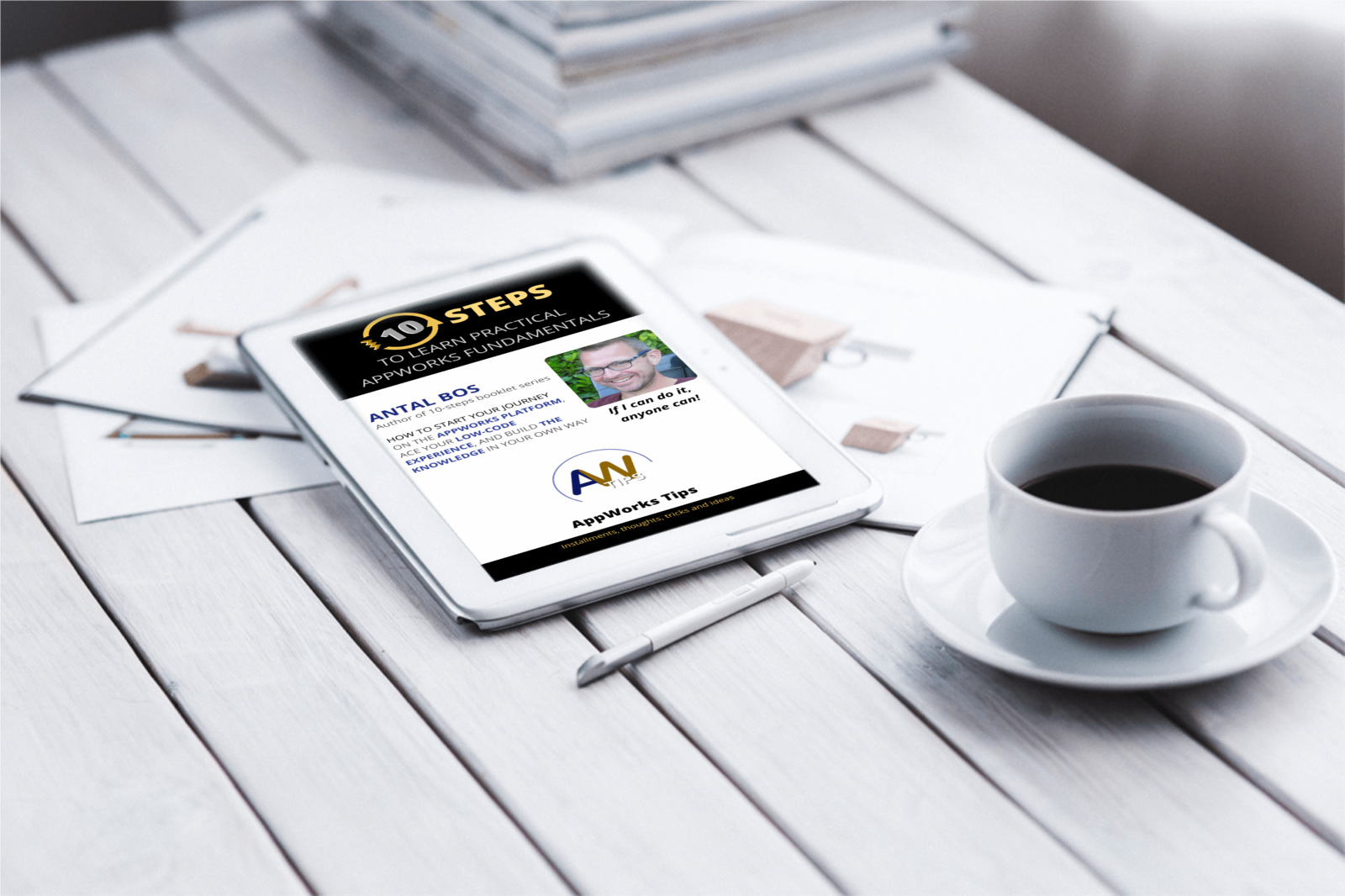Hi there “Process Automation” fans,
Welcome to the landing page of the valuable booklet:
"10 steps to learn practical Process Automation fundamentals"
This particular booklet is all about learning the fundamentals of our beloved “Process Automation” platform which is powered by OpenText. The booklet will give a theoretical inside on the platform and will bring clarification about its concepts. The best way to learn working with the platform is to use a practical approach. This is why the booklet is written in that way with lots of samples to try out yourself.
The booklet contains 10 steps; this makes it easy to manage the content on a weekly basis. This is a choice made based on the weekly posts, currently exposed on our favorite blog. So, this booklet is an addition for you to continue the grind on the weekly consumption of all the best information on “Process Automation” tips.
WHAT YOU WILL LEARN IN THIS BOOKLET
- Getting ‘the big picture’ of the low-code platform where we dive into the several tiers of the platform and explain the components available with "Process Automation"
- The different environment layers gives you a great inside in ‘Runtime’ and ‘Design time’, but we also show the ‘Admin time’ as well as the ‘Service time’ based on SOAP and ReST
- The power of ‘entity modeling’ describes how to start with your first ‘Entity’, and where to think in customization, abstraction, and subtyping
- Understanding the building block principles will give a better insight on all the available building blocks (BB’s) configured on an entity
- Crafting an ‘Entity Relation Diagram’ (ERD) and make it robust is a chapter about planning and thinking upfront on how the solution will be crafted
- Everything about the ‘Identity Package’ and the relation with OTDS. Roles are described, and an overview of the available 'identity' entities will be given
- Handling content management describes the possibilities to create the next step on saving content and/or metadata is a structured way by attaching a Content Management System.
- Make a security plan is something to not forget. A template is delivered where we make a runtime security configuration possible
- Differencing CMMN and BPMN gives an overview and samples where those differences can be found in the platform
- An iHub “reporting” chapter where you get great ‘reporting’ insights via dashboards and you see how iHub is integrated into the platform
GET YOUR COPY TODAY
10 steps to learn practical “Process Automation” fundamentals
WHO SHOULD READ THIS BOOKLET
ABOUT THE AUTHOR

The achievement I’m most proud of did not start with a plan, but is just who I am.
I started my career just after finishing my HBO-Bachelor education and still love my current job - working with ECM, giving workshops, learning new technologies and techniques, all with amazingly talented people around me! Learning and explaining is ‘my thing’.
Then new projects started with my name on the list.
The first opportunity was participating in a project from scratch with a new product called D2 - a new approach in the ECM arena. ‘Easy configuration for complex needs’. The bright future for low-code configuration has started.
I participated in more ECM projects and people started saying I’m the D2 expert.
With that knowledge I also started to invest more time in xCP and started to give the best workshops on both products and Documentum in general. This is also where I discovered ‘the real me’ who is great at giving simple explanations on complex cases.
After 15 years of experience in the field, a new product crossed my path with the name of OpenText “Process Automation”. The lion inside me became a big proponent and am now giving all my effort on becoming again that ‘expert’ on the product by sharing all my knowledge on my blog appworks-tips.com
If I can do it, anyone can.
During my career I promote people to share knowledge and embrace the communities that are available for help. I like being part of a discussion to bring in my positive feedback and can give the right note at the right time to get everyone focused again.
All the expertise made me more aware of delivering robust packages that are tested and documented. I also started thinking in reusability and design patterns. This triggered me on starting a GitHub account to set my main goals on improving my skills.
Specialties: “Process Automation” specialist | Documentum expert | D2 proponent | xCP proficient | Java enthusiast | Simplified trainer
More information about me can also be found on my LinkedIn profile; Always feel free to drop me a mail at: contact@appworks-tips.com or contact me with any question or valuable feedback (which is always appreciated).



